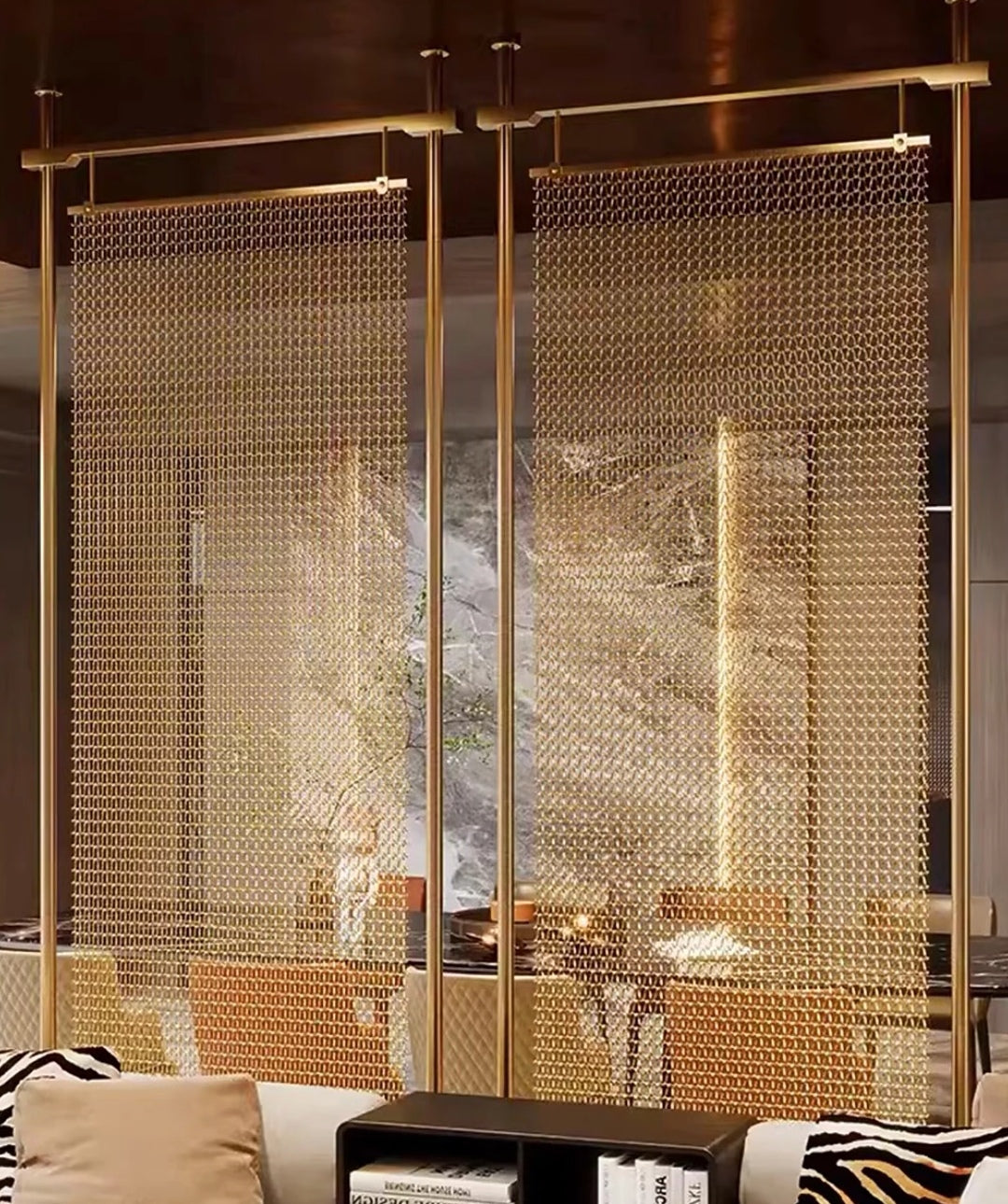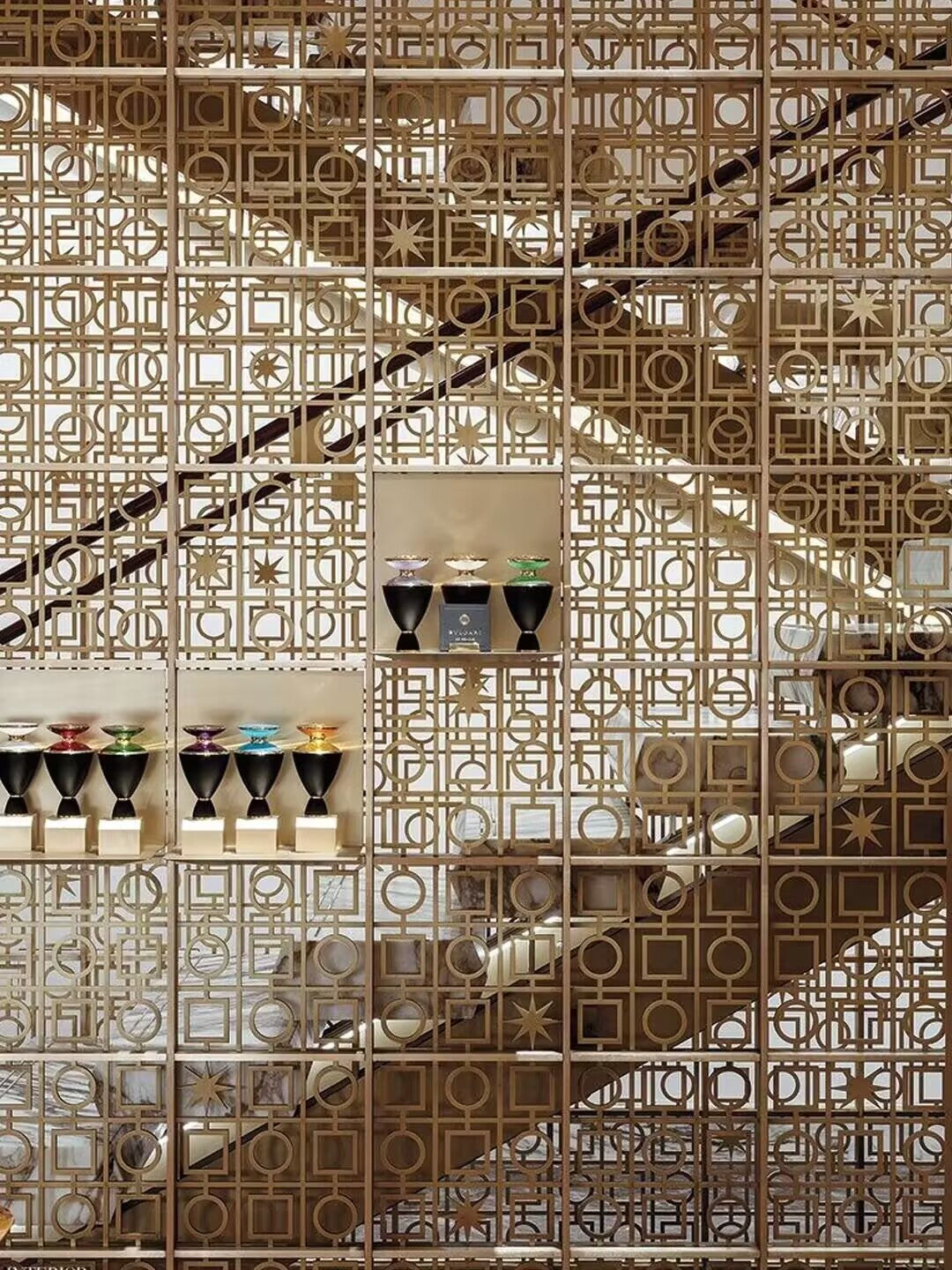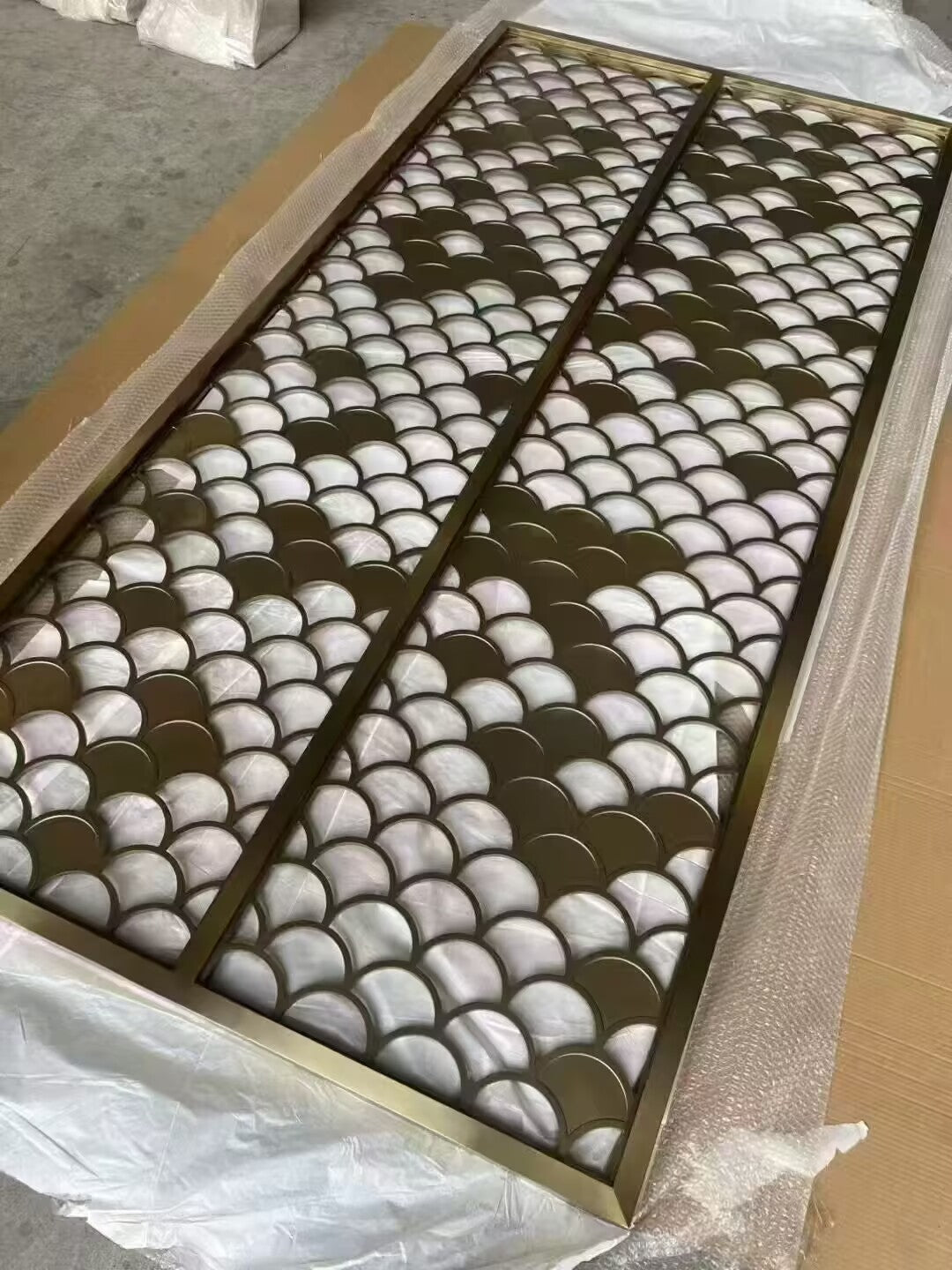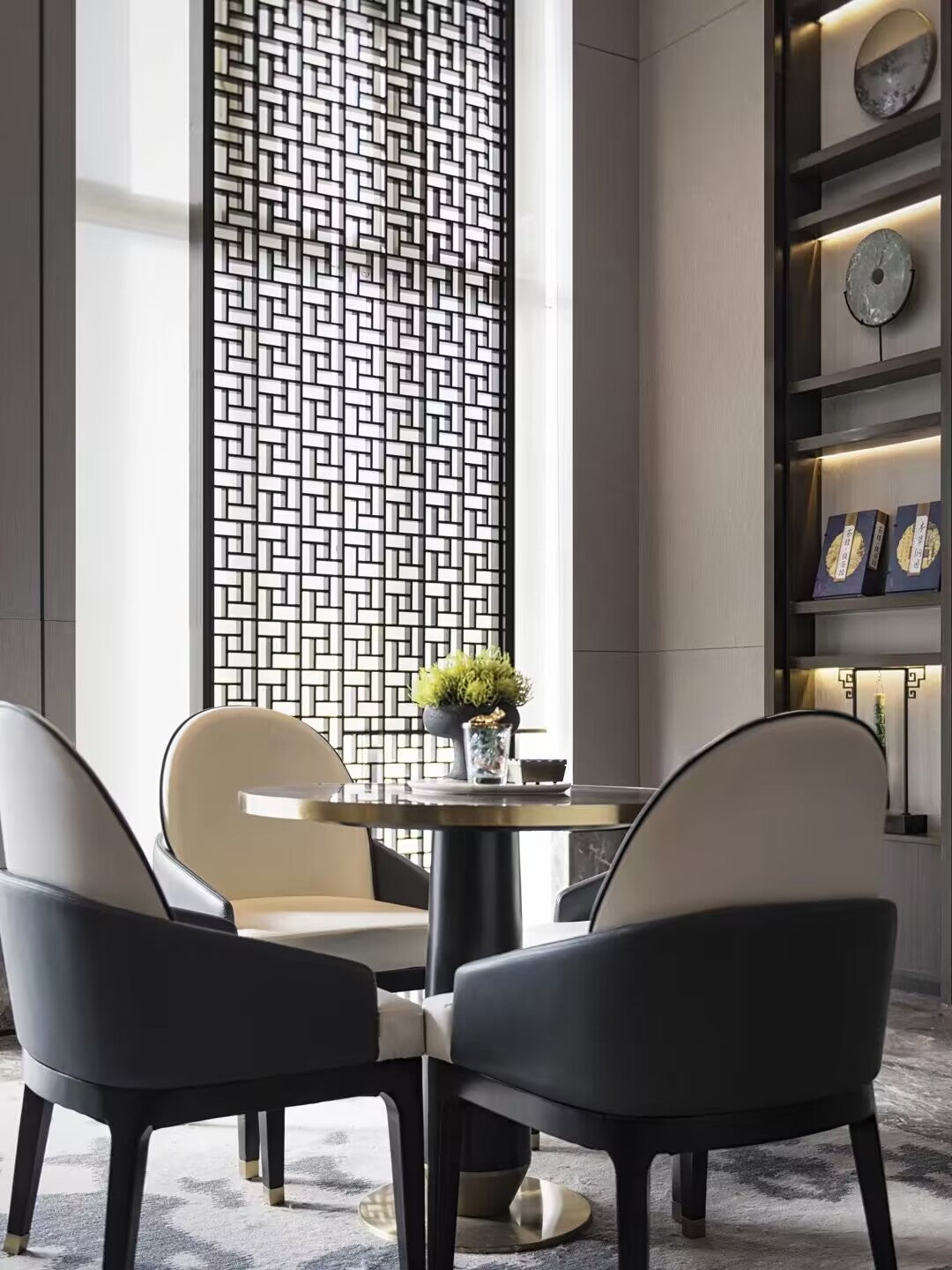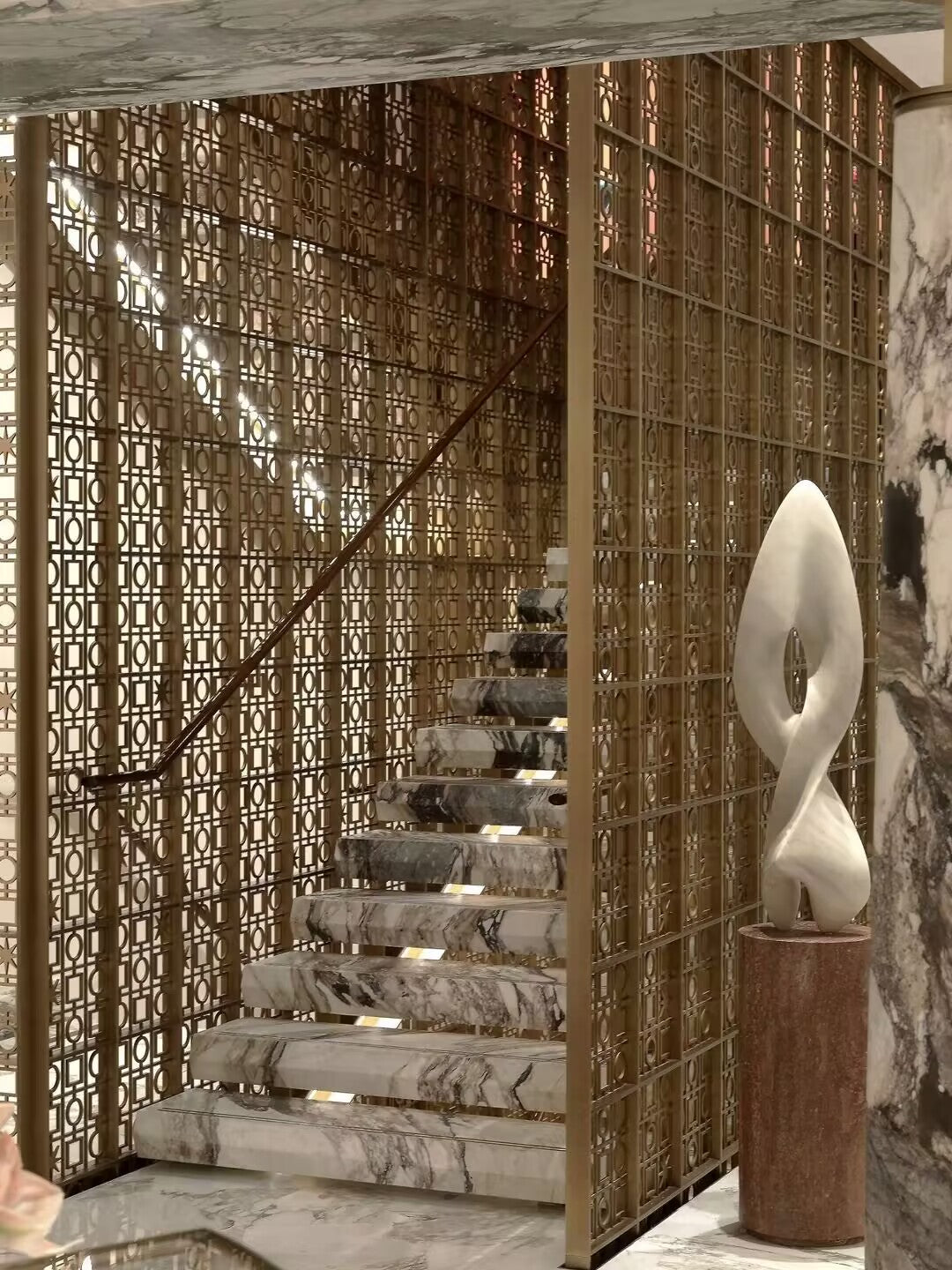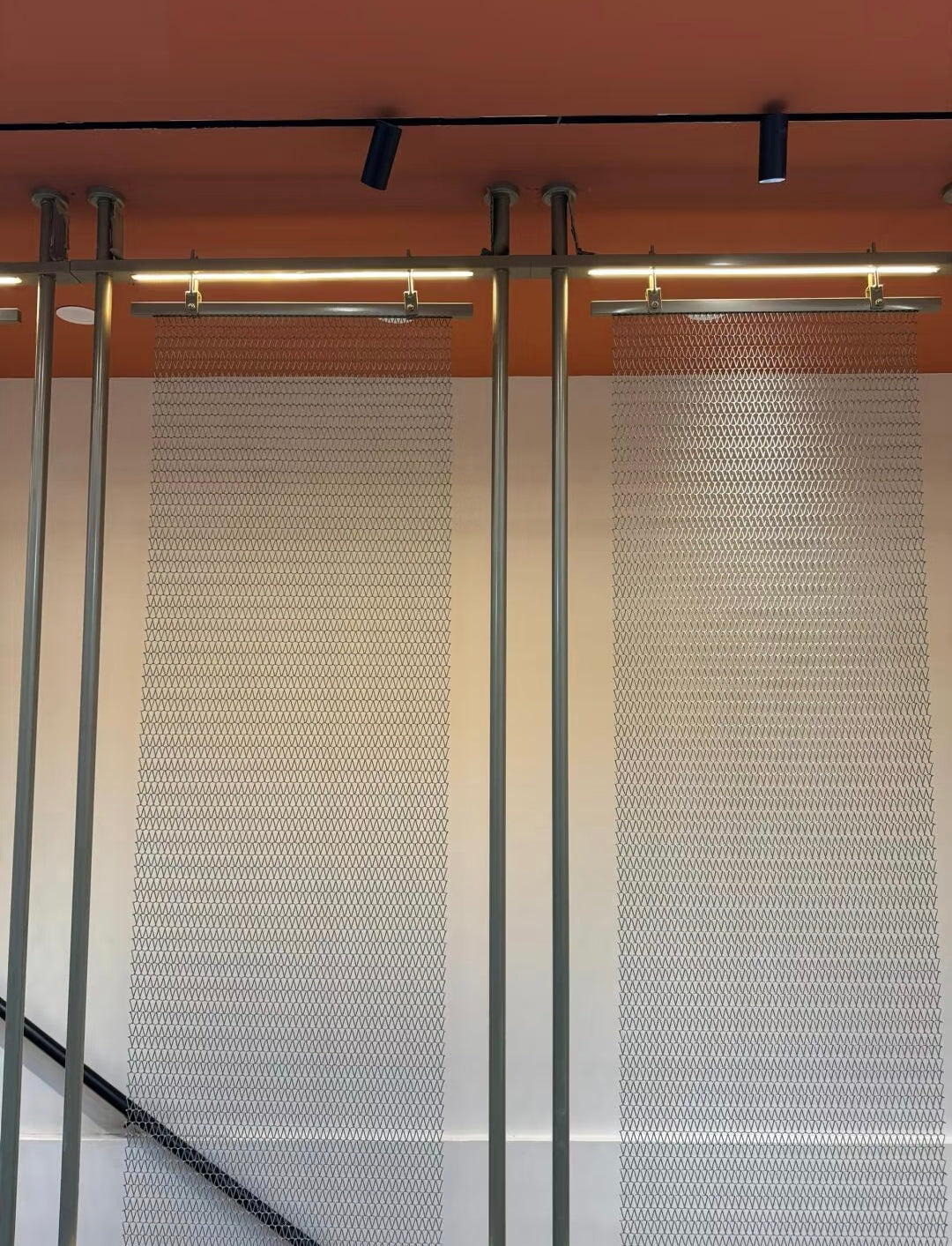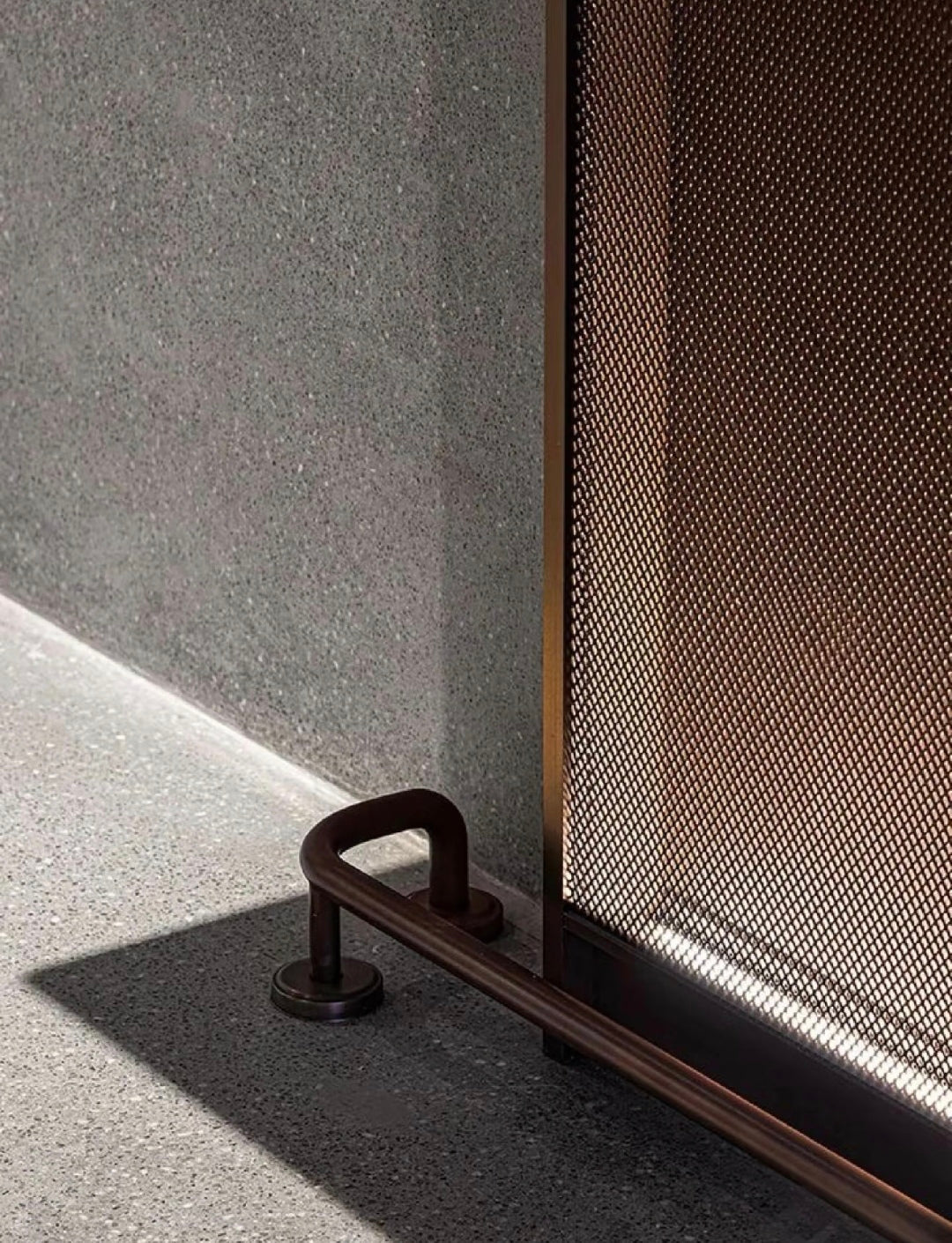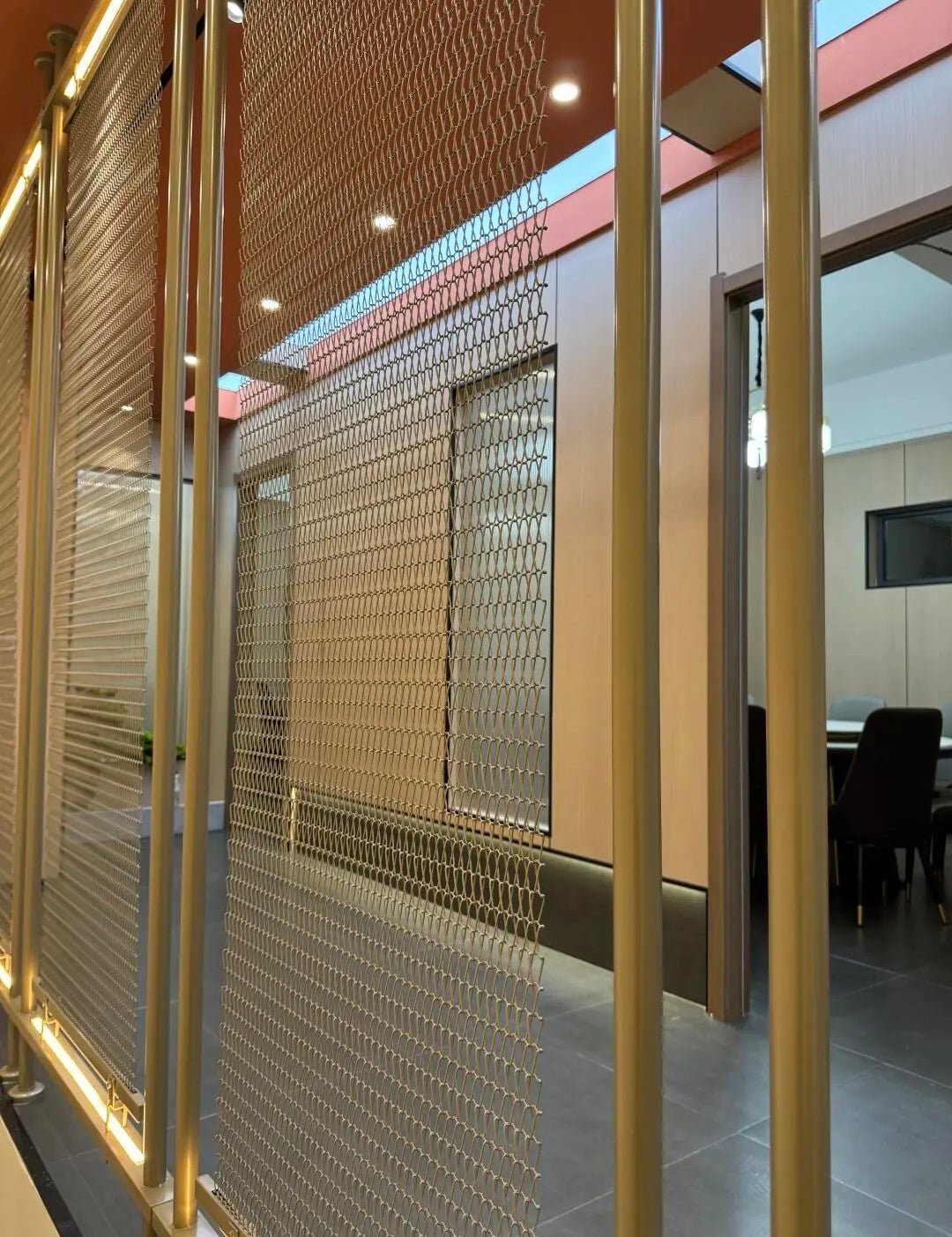FAQs
1. What are decorative metal screens and what materials and patterns does ANSUS offer for architectural screening applications?
Decorative metal screens are versatile architectural elements that combine functional performance with aesthetic appeal, providing privacy, solar control, security, and visual interest while maintaining airflow and natural light. ANSUS specializes in premium metal screening solutions that transform ordinary spaces into extraordinary architectural experiences.
Our Decorative Metal Screen Materials:
Aluminum Screening Systems:
- 3003 Series Aluminum: Enhanced strength and formability for complex patterns
- 5052 Series Aluminum: Marine-grade performance for coastal and high-corrosion environments
- 6063 Series Aluminum: Extruded profiles for framed screen systems
- Thickness Options: 1.0mm to 4.0mm depending on span requirements and wind loads
- Sheet Sizes: Standard panels up to 3000mm x 1500mm, custom sizes available
Stainless Steel Screening:
- 304 Stainless Steel: Standard grade for most architectural applications
- 316L Stainless Steel: Marine grade for coastal properties and harsh environments
- Duplex Stainless Steel: Ultra-high strength for demanding structural applications
- Surface Finishes: Mirror, brushed, bead-blasted, and textured options
Screen Pattern Categories:
Perforated Metal Screens:
- Round Hole Patterns: 2mm to 50mm diameter holes in various arrangements
- Square Perforations: Modern geometric patterns from 5mm to 40mm squares
- Hexagonal Patterns: Honeycomb designs for unique visual effects
- Decorative Patterns: Stars, diamonds, ovals, and custom artistic designs
- Micro-Perforations: Nearly invisible holes providing function with minimal visual impact
Expanded Metal Screens:
- Standard Expanded: Diamond patterns in various sizes and orientations
- Flattened Expanded: Smooth surface with excellent strength characteristics
- Architectural Expanded: Decorative patterns optimized for visual appeal
- Heavy-Duty Expanded: Thick materials for security and high-impact applications
Woven Wire Mesh Screens:
- Architectural Mesh: Decorative woven patterns with varying transparency
- Cable Mesh Systems: Large-span installations with dramatic visual impact
- Decorative Weaves: Custom patterns including twill, plain, and Dutch weaves
- Fine Mesh Systems: High-density weaves for privacy with airflow
Laser-Cut Decorative Screens:
- Geometric Patterns: Precise mathematical designs and repeating motifs
- Organic Patterns: Nature-inspired designs including leaves, branches, and flowing forms
- Cultural Motifs: Traditional patterns reflecting local architectural heritage
- Corporate Branding: Custom logos and brand elements integrated into functional screens
- Artistic Designs: Collaboration with artists for unique sculptural screening
Surface Treatment Options:
- PVDF Coatings: 25-year warranty with unlimited colors and special effects
- Powder Coatings: Durable finishes in 200+ standard colors
- Anodized Finishes: Natural aluminum protection with architectural colors
- PVD Ti-Coatings: Luxury metallic finishes including gold, bronze, and black
- Patina Finishes: Weathering steel effects and aged metal appearances
Functional Applications:
- Building facade screening and solar control
- Privacy screens for residential and commercial properties
- Security screening with aesthetic appeal
- Ventilation screens for mechanical equipment
- Decorative room dividers and space separation
- Artistic installations and sculptural elements
Decorative metal screens offer superior durability, design flexibility, and functional performance compared to traditional screening materials, making them ideal for both interior and exterior architectural applications where form and function must work together seamlessly.
2. How do decorative metal screens provide privacy while maintaining natural light and airflow in residential and commercial applications?
Decorative metal screens excel at balancing privacy, natural light, and ventilation through carefully engineered perforation patterns and strategic design principles. This makes them ideal solutions for modern architecture where occupant comfort and energy efficiency are paramount.
Privacy Control Mechanisms:
Visual Privacy Through Pattern Design:
- Perforation Density: 15-40% open area provides privacy while maintaining light transmission
- Viewing Angle Control: Angled perforations block direct sight lines while allowing light
- Pattern Orientation: Vertical patterns provide horizontal privacy, horizontal patterns block vertical views
- Layered Systems: Multiple screen layers create complete privacy with maintained airflow
- Distance Effects: Screens appear more solid from distance while maintaining close-up transparency
Graduated Privacy Solutions:
- Variable Perforation: Denser patterns at eye level, more open patterns above and below
- Transition Zones: Gradual pattern changes from private to semi-private areas
- Height-Specific Design: Different patterns optimized for standing vs. sitting privacy
- Directional Privacy: One-way privacy screens for specific viewing control
Natural Light Optimization:
Light Transmission Principles:
- Open Area Calculation: 20-50% open area maintains 60-85% light transmission
- Pattern Geometry: Round holes provide maximum light with minimum visual intrusion
- Micro-Perforations: Nearly invisible holes (1-3mm) maintain clean appearance with light control
- Reflective Surfaces: Light-colored or metallic finishes reflect and distribute natural light
- Solar Angle Consideration: Pattern design optimized for seasonal sun angles
Daylighting Benefits:
- Glare Reduction: Screens diffuse harsh sunlight while maintaining illumination
- Even Light Distribution: Perforated patterns create uniform interior lighting
- Seasonal Adaptation: Fixed screens provide year-round light control
- Energy Savings: Reduced artificial lighting needs during daylight hours
- Circadian Benefits: Natural light patterns support occupant health and productivity
Airflow and Ventilation Performance:
Ventilation Principles:
- Pressure Differential: Open patterns allow natural air movement
- Stack Effect: Vertical screens promote natural convection cooling
- Cross Ventilation: Strategic screen placement enhances airflow patterns
- Wind Direction: Pattern orientation optimized for prevailing wind patterns
Airflow Calculations:
- Free Area Ratio: 25-60% open area provides excellent ventilation
- Pressure Drop: Minimal resistance to airflow compared to solid barriers
- Air Change Rates: Screens can provide 5-15 air changes per hour naturally
- Thermal Comfort: Enhanced air movement improves occupant comfort
Application-Specific Solutions:
Residential Privacy Screens:
- Patio and Deck Screening: 30-40% open area for optimal privacy with breeze
- Garden Screens: Decorative patterns providing privacy without blocking garden views
- Pool Area Screening: Chlorine-resistant materials with wind and privacy control
- Balcony Railings: Integrated screening providing safety, privacy, and ventilation
- Window Screening: External screens reducing heat gain while maintaining views
Commercial Applications:
Office Building Screening:
- Facade Systems: 20-35% open area reducing solar heat gain by 40-60%
- Parking Garage Ventilation: 50-70% open area providing required air changes
- Rooftop Equipment Screening: Concealing mechanical equipment while maintaining airflow
- Outdoor Dining Areas: Restaurant patios with weather protection and privacy
- Loading Dock Screening: Industrial applications balancing security with ventilation
Institutional Applications:
- School Courtyards: Safe, supervised outdoor spaces with natural ventilation
- Healthcare Facilities: Patient areas with privacy, natural light, and fresh air
- Retail Environments: Shopping centers with comfortable outdoor circulation spaces
- Transportation Hubs: Airport and transit facilities with passenger comfort features
Performance Optimization:
Environmental Considerations:
- Wind Load Analysis: Screens designed for local wind conditions and building height
- Solar Orientation: Pattern optimization for building orientation and climate
- Seasonal Variations: Year-round performance consideration for changing conditions
- Maintenance Access: Design allows cleaning and maintenance without performance loss
Computational Design:
- CFD Analysis: Computational fluid dynamics modeling for optimal airflow
- Daylight Modeling: Computer simulation ensuring optimal natural lighting
- Privacy Analysis: 3D modeling verifying sight line control
- Energy Modeling: Integration with building energy analysis for optimal performance
Measurable Benefits:
- Energy Savings: 15-30% reduction in HVAC costs through natural ventilation and solar control
- Comfort Improvement: Enhanced thermal comfort through air movement and light control
- Privacy Satisfaction: Quantifiable privacy levels while maintaining openness
- Maintenance Reduction: Durable materials requiring minimal upkeep compared to traditional solutions
Decorative metal screens provide scientifically optimized solutions that enhance occupant comfort while reducing building energy consumption, making them essential elements in sustainable architectural design.
3. What are the best decorative metal screen solutions for solar control and energy efficiency in commercial buildings?
Decorative metal screens offer exceptional solar control performance while maintaining architectural aesthetics, making them ideal for commercial buildings seeking to reduce energy costs while creating visually appealing facades. ANSUS provides engineered screening solutions that can reduce cooling costs by 25-50% while enhancing building appearance.
Solar Control Principles and Performance:
Solar Heat Gain Reduction:
- Direct Solar Blocking: Screens intercept 60-85% of direct solar radiation before it reaches glazing
- Reflected Heat Management: Light-colored and metallic finishes reflect solar energy away from building
- Thermal Mass Benefits: Metal screens absorb and re-radiate heat away from building envelope
- Convective Cooling: Air movement behind screens removes absorbed heat through convection
- Seasonal Optimization: Fixed screens provide year-round solar control with seasonal sun angle variations
Perforation Pattern Optimization for Solar Control:
High-Performance Solar Screen Patterns:
- Hexagonal Perforations: 20-30% open area providing optimal solar control with maintained views
- Angled Perforations: Directional holes blocking high-angle summer sun while allowing low winter sun
- Graduated Patterns: Variable density with maximum shading at peak solar exposure areas
- Micro-Perforations: 1-3mm holes providing 90% solar control with minimal visual impact
- Custom Solar Patterns: Computer-optimized designs for specific building orientations and climates
Material Selection for Maximum Solar Performance:
Aluminum Solar Screens:
- High Reflectivity: Natural aluminum reflects 80-90% of solar radiation
- Thermal Conductivity: Excellent heat dissipation prevents heat buildup
- Lightweight: Minimal structural load on building facade systems
- Corrosion Resistance: Long-term performance in outdoor solar exposure
- Cost Effectiveness: Optimal performance-to-cost ratio for most applications
Surface Treatments for Enhanced Solar Control:
- White PVDF Coating: Maximum solar reflectance (85-90%) with 25-year warranty
- Light Gray Finishes: High reflectance with reduced glare compared to white
- Metallic Finishes: Polished aluminum or stainless steel for maximum reflection
- Perforated + Solid Combinations: Hybrid systems optimizing both solar control and aesthetics
Energy Efficiency Performance Data:
Quantified Energy Savings:
- Cooling Load Reduction: 25-50% reduction in peak cooling loads
- Annual Energy Savings: 15-35% reduction in total HVAC energy consumption
- Peak Demand Reduction: 30-60% reduction in peak electrical demand
- Payback Period: Typically 3-7 years for commercial installations
- Utility Rebates: Many utilities offer rebates for solar control installations
Building-Specific Applications:
Office Buildings:
- South-Facing Facades: Maximum solar exposure requiring 70-85% solar blocking
- East/West Facades: Morning and afternoon sun control with 60-75% blocking
- Curtain Wall Integration: Screens mounted 150-300mm from glazing for optimal performance
- Interior Comfort: Reduced glare and hot spots improving occupant productivity
- HVAC Downsizing: Reduced cooling loads allow smaller, more efficient HVAC systems
Retail and Commercial Centers:
- Storefront Protection: Merchandise protection from UV damage and heat gain
- Customer Comfort: Improved shopping environment with controlled solar heat
- Energy Cost Control: Significant operational cost savings for large retail spaces
- Architectural Appeal: Enhanced building appearance attracting customers and tenants
Healthcare and Institutional Buildings:
- Patient Comfort: Controlled solar heat gain in patient rooms and common areas
- Equipment Protection: Sensitive medical equipment protected from solar heat gain
- Energy Budget Management: Predictable energy costs for budget planning
- Regulatory Compliance: Meeting increasingly strict energy codes and standards
Advanced Solar Control Systems:
Dynamic Solar Control:
- Operable Screens: Motorized systems adjusting to solar conditions
- Seasonal Adjustment: Manual repositioning for optimal year-round performance
- Integrated Controls: Building automation system integration for optimal operation
- Smart Building Integration: IoT sensors optimizing screen position based on conditions
Hybrid Solar Control Systems:
- Screen + Glazing: High-performance glazing combined with external screening
- Integrated Photovoltaics: Solar panels integrated with decorative screening
- Green Wall Integration: Living walls combined with solar control screening
- Rainwater Collection: Screens designed to direct rainwater for building use
Performance Verification and Optimization:
Energy Modeling and Analysis:
- Pre-Installation Modeling: Computer simulation predicting energy savings
- Post-Installation Verification: Measured performance validation
- Ongoing Optimization: Seasonal adjustments for maximum performance
- ROI Tracking: Financial performance monitoring and reporting
Testing and Certification:
- Solar Heat Gain Coefficient (SHGC): Measured performance ratings
- Visible Light Transmission (VLT): Daylighting performance verification
- U-Factor Testing: Overall thermal performance measurement
- Wind Load Testing: Structural performance verification for high-rise applications
Green Building Certification Benefits:
- LEED Credits: Contributes to multiple LEED credit categories including Energy & Atmosphere
- BREEAM Points: Supports BREEAM certification for international projects
- Energy Star Qualification: Helps achieve Energy Star building certification
- Utility Incentives: Qualifies for utility rebate and incentive programs
Maintenance and Long-Term Performance:
- Self-Cleaning Surfaces: PVDF coatings maintain solar reflectance over time
- Corrosion Resistance: Long-term performance without degradation
- Easy Cleaning: Simple maintenance preserves optimal solar control performance
- Performance Warranty: 20-25 year warranties on solar control performance
Decorative metal screens provide measurable energy savings while enhancing building aesthetics, making them essential components of high-performance commercial building design.
4. How do you customize decorative metal screens with laser-cut patterns, corporate logos, or artistic designs for unique architectural projects?
ANSUS specializes in creating completely customized decorative metal screens that transform functional elements into artistic architectural features. Our advanced laser cutting technology and design capabilities enable unlimited customization possibilities for unique projects requiring distinctive visual impact.
Laser Cutting Technology and Capabilities:
Precision Laser Cutting Systems:
- Fiber Laser Technology: Ultra-precise cutting with 0.1mm tolerance on complex patterns
- Maximum Sheet Size: 3000mm x 1500mm single-piece panels for large-scale installations
- Material Thickness Range: 0.8mm to 6.0mm depending on material and pattern complexity
- Cutting Speed: High-speed production maintaining precision on intricate designs
- Edge Quality: Smooth, burr-free edges requiring no secondary finishing
Pattern Complexity Capabilities:
- Minimum Feature Size: 1mm holes and 0.5mm line widths achievable
- Maximum Pattern Density: Up to 10,000 individual cuts per square meter
- Curved Geometries: Smooth curves and organic shapes with mathematical precision
- Nested Patterns: Multiple pattern scales within single panel designs
- Variable Thickness: Different cut depths for 3D relief effects
Corporate Logo Integration:
Logo Reproduction Process:
- Vector Conversion: Convert existing logos to precision cutting files
- Scale Optimization: Logos scalable from small accent elements to building-scale installations
- Material Consideration: Logo design adapted for optimal structural performance
- Backlighting Integration: Logo designs optimized for LED backlighting effects
- Brand Color Matching: Powder coating or PVDF finishes matching exact corporate colors
Logo Application Examples:
- Corporate Headquarters: Large-scale logo walls creating impressive entrance features
- Retail Environments: Brand integration into functional screening elements
- Hospitality Projects: Hotel and restaurant branding integrated with privacy screening
- Educational Facilities: School and university logos in campus architectural elements
- Healthcare Facilities: Medical center branding in patient and visitor areas
Artistic Design Collaboration:
Custom Artistic Patterns:
- Nature-Inspired Designs: Leaves, trees, water patterns, and organic forms
- Geometric Art: Mathematical patterns, fractals, and contemporary geometric designs
- Cultural Motifs: Traditional patterns reflecting local architectural heritage
- Abstract Art: Artistic interpretations and sculptural screening elements
- Photographic Reproduction: High-resolution images converted to cutting patterns
Artist Collaboration Process:
- Design Development: Work directly with artists to realize creative visions
- Technical Translation: Convert artistic concepts into manufacturable designs
- Prototype Development: Physical samples for artist approval and refinement
- Installation Planning: Coordinate artistic vision with structural requirements
- Documentation: Complete project documentation for future reference
Architectural Pattern Categories:
Traditional and Cultural Patterns:
- Islamic Geometric: Traditional Middle Eastern patterns adapted for modern architecture
- Asian Motifs: Japanese, Chinese, and Southeast Asian design elements
- European Classical: Art Deco, Victorian, and classical architectural patterns
- Indigenous Designs: Native patterns reflecting local cultural heritage
- Contemporary Fusion: Modern interpretations of traditional design elements
Modern Architectural Patterns:
- Parametric Designs: Computer-generated patterns based on mathematical algorithms
- Biomimetic Patterns: Nature-inspired designs optimized through computational analysis
- Kinetic Illusions: Patterns creating visual movement and optical effects
- Gradient Transitions: Gradually changing patterns across large installations
- Interactive Designs: Patterns revealing different images from various viewing angles
Technical Design Considerations:
Structural Performance Integration:
- Load Path Analysis: Ensure decorative patterns don't compromise structural integrity
- Wind Load Optimization: Pattern design considering wind pressure and building height
- Thermal Movement: Accommodate expansion and contraction in large installations
- Fastening Integration: Hidden fastening systems maintaining clean artistic appearance
- Maintenance Access: Design allowing cleaning and maintenance without pattern disruption
Manufacturing Optimization:
- Material Efficiency: Pattern layouts minimizing waste and reducing costs
- Production Sequencing: Optimize cutting sequences for efficiency and quality
- Quality Control: Precision measurement and inspection throughout production
- Packaging Design: Protect intricate patterns during shipping and handling
- Installation Coordination: Detailed installation drawings and support
Advanced Customization Options:
Multi-Layer Screening Systems:
- Depth Effects: Multiple screen layers creating three-dimensional visual effects
- Color Layering: Different colored screens creating complex color interactions
- Pattern Overlay: Combining multiple patterns for enhanced visual complexity
- Lighting Integration: LED systems integrated between screen layers
- Kinetic Elements: Moving screen elements for dynamic architectural features
Surface Treatment Customization:
- Gradient Finishes: Color transitions across single panels or installations
- Textured Surfaces: Embossed or etched textures combined with cut patterns
- Patina Effects: Aged metal appearances and weathering effects
- Metallic Accents: Selective metallic highlighting of pattern elements
- Photographic Printing: High-resolution images printed on metal substrates
Smart and Interactive Features:
- LED Integration: Programmable lighting creating dynamic visual effects
- Sensor Integration: Motion-activated lighting or pattern changes
- Digital Integration: Screens designed to accommodate digital display elements
- Environmental Response: Patterns that change appearance based on viewing angle or lighting
- Maintenance Technology: Self-monitoring systems alerting to maintenance needs
Quality Assurance and Testing:
Pattern Accuracy Verification:
- Dimensional Inspection: Laser measurement ensuring pattern accuracy
- Visual Quality Control: Aesthetic inspection for consistency and quality
- Structural Testing: Load testing ensuring patterns don't compromise performance
- Weather Resistance: Testing pattern integrity under environmental conditions
- Installation Testing: Mock-up installations verifying assembly procedures
Project Documentation:
- As-Built Drawings: Complete documentation of installed systems
- Maintenance Manuals: Care instructions preserving pattern appearance
- Warranty Documentation: Comprehensive warranty coverage for custom work
- Pattern Archives: Digital files preserved for future additions or repairs
Investment and Value:
Custom Design Pricing:
- Design Development: $5,000-25,000 depending on complexity and scope
- Pattern Premium: 25-100% premium over standard patterns depending on complexity
- Minimum Quantities: 50-100㎡ minimum for most custom laser-cut patterns
- Volume Benefits: Better pricing for larger installations and repeat projects
Long-Term Value:
- Unique Identity: Distinctive architectural features enhancing property value
- Brand Recognition: Corporate installations supporting marketing and identity goals
- Artistic Legacy: Permanent installations becoming architectural landmarks
- Maintenance Benefits: Durable materials maintaining appearance for 25+ years
Technical Support:
- Design Assistance: Complete design development and technical support
- Installation Support: On-site technical assistance for complex installations
- Maintenance Training: Training for facility managers and maintenance staff
- Future Modifications: Support for additions, modifications, or repairs
Custom decorative metal screens provide unlimited design possibilities while maintaining superior functional performance, creating architectural elements that serve as both functional building components and artistic installations that enhance property value and user experience.
5. How do you maintain and clean decorative metal screens to preserve their appearance and functionality over time?
Proper maintenance and cleaning of decorative metal screens is essential for preserving their aesthetic appeal and functional performance throughout their 25+ year lifespan. ANSUS provides comprehensive maintenance programs and guidelines that ensure optimal long-term performance with minimal effort and cost.
Routine Maintenance Schedule and Procedures:
Annual Maintenance (Every 12 Months):
- Visual Inspection: Complete inspection for damage, corrosion, or coating deterioration
- Fastener Check: Verify all fasteners are tight and corrosion-free
- Drainage Inspection: Ensure weep holes and drainage systems are clear and functional
- Structural Assessment: Check for any deflection, vibration, or structural issues
- Performance Verification: Confirm screens are providing intended privacy, solar control, or ventilation
Quarterly Maintenance (Every 3 Months):
- Basic Cleaning: Remove surface dirt, debris, and organic matter
- Perforation Clearing: Ensure holes and openings remain unobstructed
- Sealant Inspection: Check perimeter sealants for adhesion and integrity
- Hardware Lubrication: Lubricate moving parts in operable screen systems
- Documentation: Record maintenance activities and any issues identified
Cleaning Procedures by Material Type:
Aluminum Screens with PVDF Coating:
- Cleaning Solution: Mild detergent (pH 5-8) mixed with clean water
- Cleaning Method: Soft brush or cloth, low-pressure water rinse (max 40 bar)
- Frequency: Annual cleaning sufficient for most environments, quarterly for industrial areas
- Special Considerations: Avoid abrasive cleaners or steel wool that could damage coating
- Self-Cleaning Properties: PVDF coatings naturally shed dirt and pollutants
Powder Coated Aluminum Screens:
- Cleaning Solution: Non-abrasive household detergent with warm water
- Cleaning Method: Soft sponge or cloth, thorough water rinse
- Frequency: Semi-annual cleaning recommended for optimal appearance
- Stubborn Stains: Isopropyl alcohol for grease or adhesive residues
- Touch-Up: Minor coating damage can be touched up with matching powder coating
Stainless Steel Screens:
- Cleaning Solution: Specialized stainless steel cleaner or mild soap solution
- Cleaning Method: Wipe with grain direction, dry immediately to prevent water spots
- Frequency: Monthly cleaning for high-visibility applications, quarterly for others
- Polishing: Occasional polishing with stainless steel polish maintains luster
- Corrosion Prevention: Immediate cleaning of any surface contaminants
Anodized Aluminum Screens:
- Cleaning Solution: Mild detergent with soft water (avoid hard water minerals)
- Cleaning Method: Gentle washing with soft cloth, thorough rinsing
- Frequency: Semi-annual cleaning maintains appearance
- Protection: Avoid acidic or alkaline cleaners that could damage anodized layer
- Restoration: Professional re-anodizing available if coating becomes damaged
Environment-Specific Maintenance:
Coastal and Marine Environments:
- Salt Removal: Monthly fresh water rinsing to remove salt deposits
- Enhanced Inspection: Quarterly inspection for any signs of corrosion
- Material Selection: 316L stainless steel or 5052 aluminum for maximum corrosion resistance
- Protective Coatings: Marine-grade PVDF coatings provide enhanced protection
- Emergency Cleaning: Immediate cleaning after severe weather events
Industrial and Urban Environments:
- Pollution Removal: Quarterly cleaning to remove industrial contaminants
- Air Quality Monitoring: Adjust cleaning frequency based on local air quality
- Chemical Resistance: Select coatings resistant to specific industrial chemicals
- Filtration Benefits: Screens actually help filter air pollutants from building interiors
- Professional Cleaning: Annual professional cleaning for heavily contaminated areas
High-Traffic and Security Applications:
- Damage Inspection: Monthly inspection for vandalism or impact damage
- Graffiti Removal: Anti-graffiti coatings enable easy graffiti removal
- Replacement Planning: Stock replacement panels for rapid repair of damaged sections
- Security Verification: Ensure screens maintain required security performance
- Access Control: Maintain cleaning access without compromising security
Professional Maintenance Services:
Comprehensive Maintenance Programs:
- Scheduled Inspections: Professional technicians perform detailed inspections
- Preventive Maintenance: Proactive maintenance preventing major issues
- Emergency Response: 24/7 availability for urgent maintenance needs
- Documentation: Complete maintenance records for warranty and insurance purposes
- Cost Predictability: Fixed annual costs for budgeting and planning
Specialized Cleaning Services:
- High-Rise Access: Professional window cleaning companies with high-rise experience
- Pressure Washing: Professional equipment and techniques for large installations
- Chemical Cleaning: Specialized cleaning for industrial contamination
- Restoration Services: Professional restoration of damaged or deteriorated screens
- Coating Renewal: Re-coating services extending screen lifespan
Troubleshooting Common Issues:
Staining and Discoloration:
- Water Stains: Clean with mild acid solution (vinegar and water)
- Organic Stains: Enzyme-based cleaners for biological contamination
- Metal Stains: Specialized metal cleaners for rust or oxidation stains
- Paint Overspray: Solvent-based removers (test in inconspicuous area first)
- Prevention: Regular cleaning prevents most staining issues
Structural Issues:
- Loose Fasteners: Re-tighten to specified torque values
- Panel Deflection: Investigate wind loads or structural support issues
- Vibration: Add damping elements or modify support structure
- Corrosion: Address immediately to prevent spread
- Professional Assessment: Structural engineer evaluation for significant issues
Performance Optimization:
Functional Performance Maintenance:
- Airflow Verification: Ensure perforations remain clear for ventilation
- Privacy Assessment: Verify screens continue to provide required privacy levels
- Solar Control: Confirm screens maintain solar heat gain reduction
- Acoustic Performance: Test sound control effectiveness periodically
- Security Function: Verify screens maintain required security performance
Aesthetic Performance Maintenance:
- Color Consistency: Monitor for fading or color changes across installation
- Surface Quality: Maintain smooth, uniform surface appearance
- Pattern Integrity: Ensure decorative patterns remain clear and well-defined
- Lighting Integration: Maintain integrated lighting systems for optimal effect
- Seasonal Adjustment: Modify cleaning frequency based on seasonal conditions
Proper maintenance of decorative metal screens ensures optimal performance and appearance throughout their extended lifespan, providing excellent return on investment while maintaining the architectural and functional benefits that make them superior to traditional screening materials.
